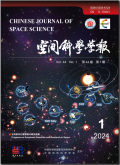THE SPACE EXPERIMENT OF PROTEIN CRYSTALLIZATION ABOARD THE CHINESE SPACECRAFT SZ-3
@@ Using a new flight hardware, a Chinese mission of space protein crystallization has been performed on the Chinese spacecraft SZ-3 for seven days from March 25 to Apr. 1, 2002. The rate of yielding crystals in the 60 samples is 75%, a little higher than the ground control experiment. Preliminary analysis of the experimental results have shown that among the 16 proteins involved in the mission, about 4 kinds of better diffraction-quality protein crystals were produced in space. At least one kind of protein crystals, i.e. crystals of cytochrome b5 mutant could diffract X ray beyond the highest resolution reported so far. In addition, some rules derived from our numerical studies of the liquid/liquid diffusion protein crystallization were proved by the crystallization of lysozyme as model protein in this space experiment,which also clearly showed the advantages and disadvantages of the gelled protein solution used in microgravity growth of protein crystals. In order to exploit this mission, more diffraction work with the grown crystals and detailed analysis of data to be obtained will be done in the next few months.
PROTEIN CRYSTALLIZATION、protein crystallization、advantages and disadvantages、numerical studies、space experiment、ground control、used in
22
Q5(生物化学)
2004-01-08(万方平台首次上网日期,不代表论文的发表时间)
共1页
153-153






